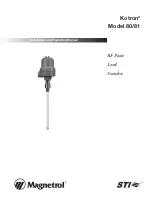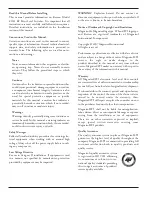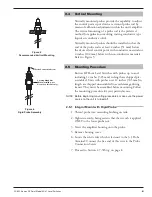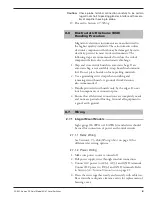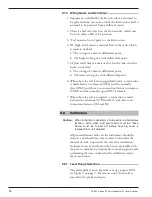
1
50-605 Kotron RF Point Model 80/81 Level Switches
1.0
Introduction
1.1
Principle of Operation
The amount of capacitance developed in any vessel is
determined by the size (surface area) of the probe, the dis-
tance from the probe to its ground, and the dielectric of
the medium being measured. Considering that the probe’s
mounting position is fixed, and that the dielectric value of
the medium is constant, then the amount of capacitance
developed in any vessel becomes dependent upon the
probe’s total surface area.
A probe’s diameter, together with its length, determine its
surface area. Adjusting the combination of probe diameter,
length, and proximity to ground, the necessary capacitance
required by the electronic circuitry can generate.
As media rises and falls in the tank, the amount of capaci-
tance developed between the sensing probe and the ground
also rises and falls. This change in capacitance is sensed by
the electronics.
The capacitance-controlled oscillator circuit, mounted
on the probe, changes the capacitance signal to a variable
frequency. This stabilized signal can then be sent to the
main electronics located up to 5000 feet (1500 meters)
away via standard shielded, twisted pair cable. This
eliminates the 150 feet (45 meters) maximum distance
limitation, using costly coaxial or triaxial cable utilized
by other manufacturers.
1.2
Description
Kotron RF Point Level Switchescan be utilized in level
control applications with either liquid or dry bulk materials.
They can also be used to sense and control viscous, sticky,
highly conductive materials. The electronic amplifier may
be either mounted directly on the sensing probe or located
remote from the probe. In remote applications, the sensing
probe is furnished with a housing.

